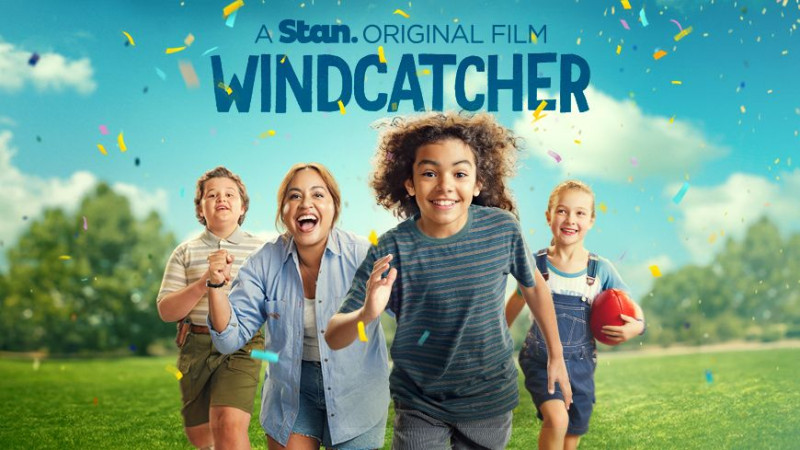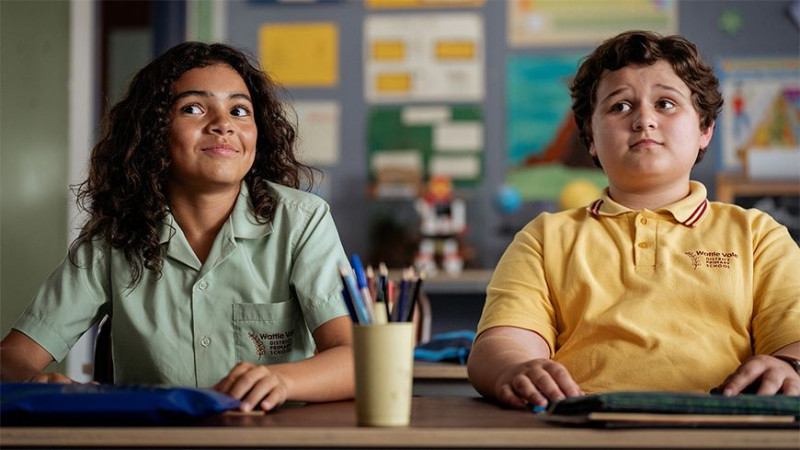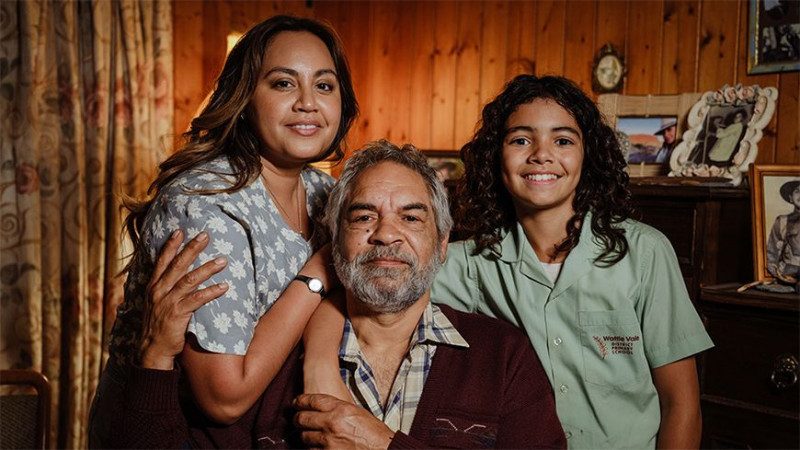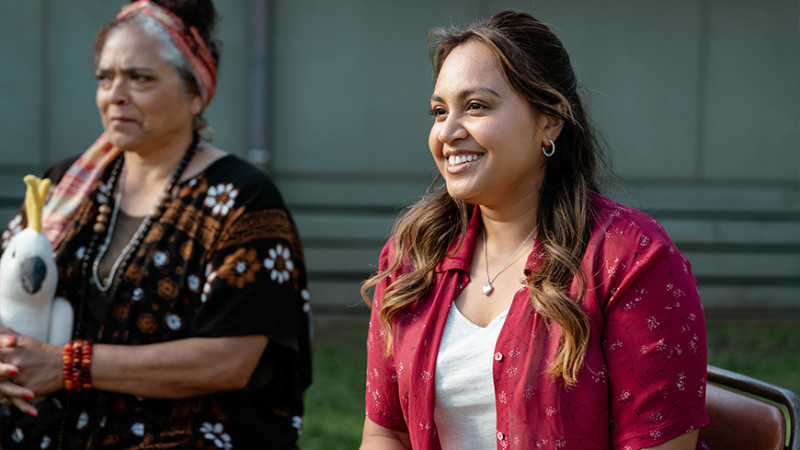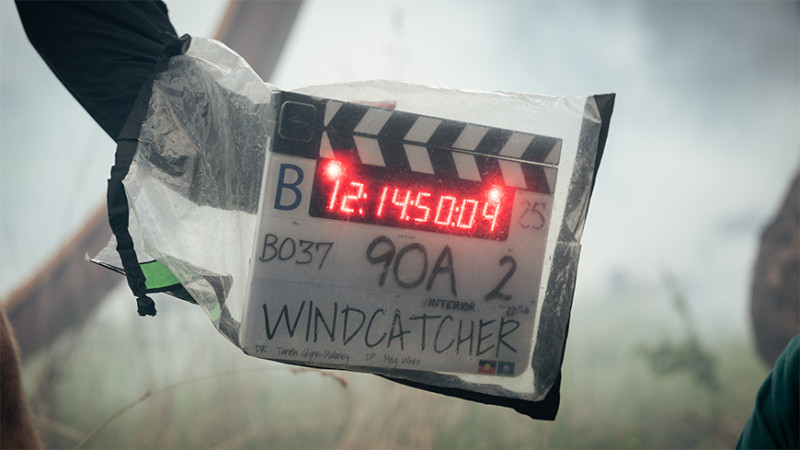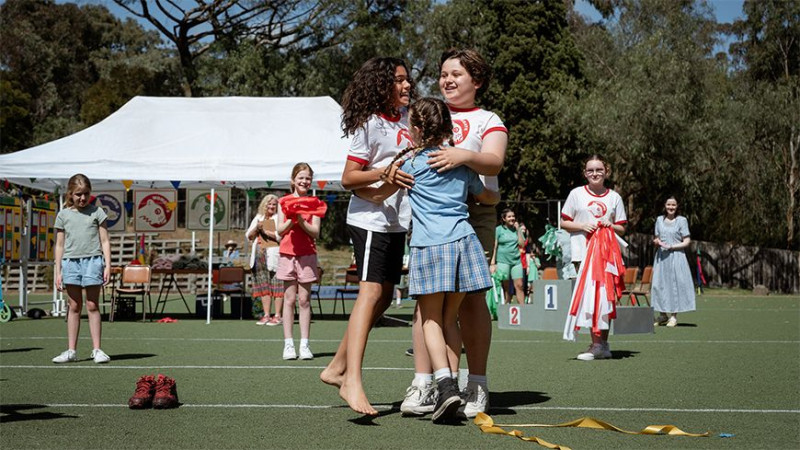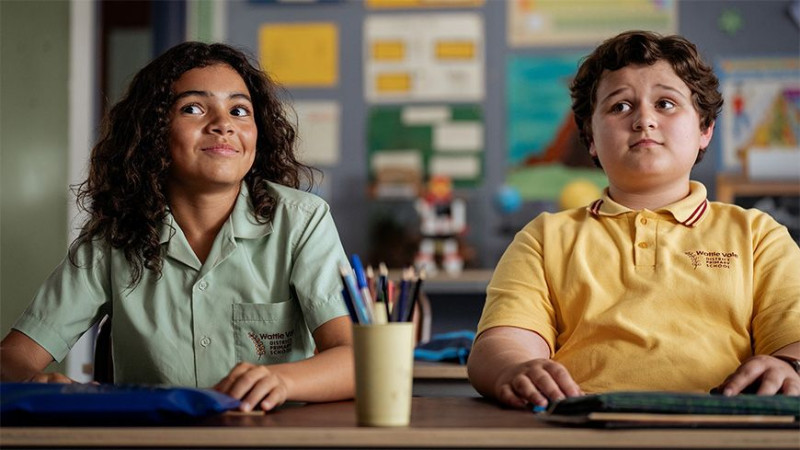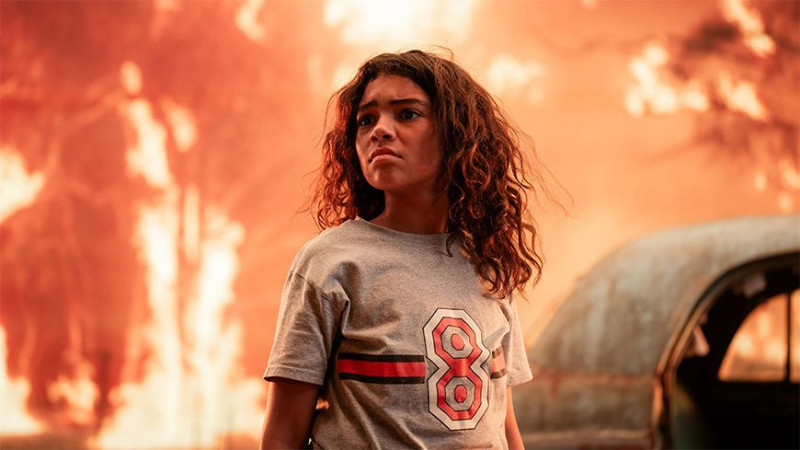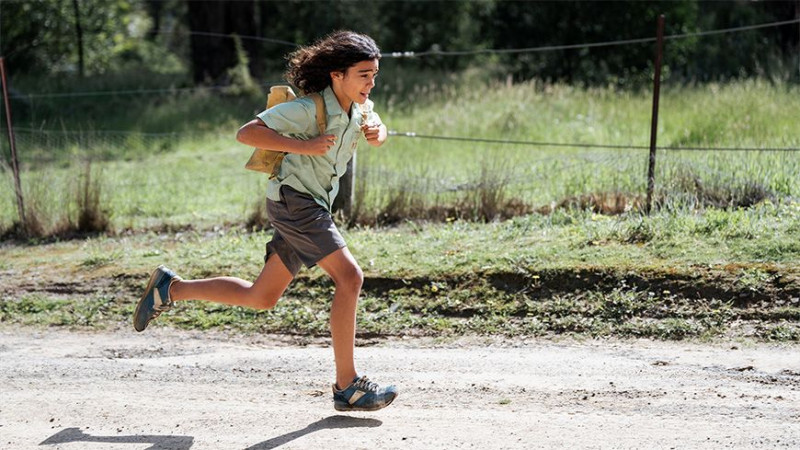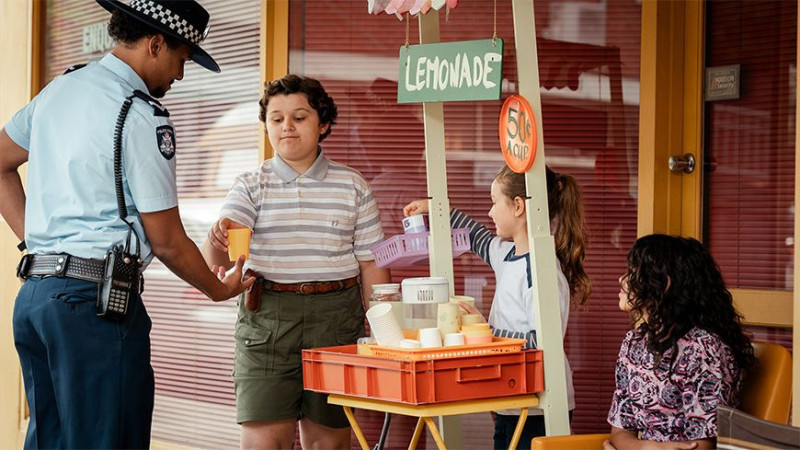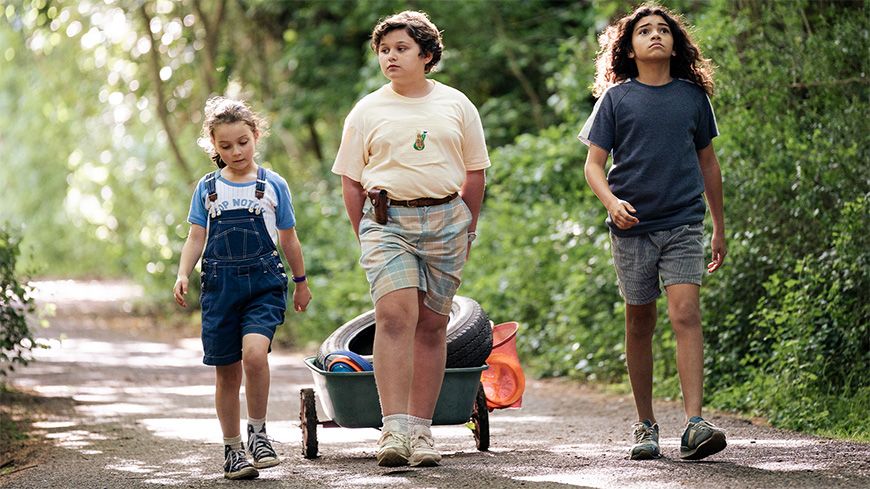
About this Resource

In Windcatcher, ten-year-old Percy Boy Collins and his eclectic crew of friends outsmart a gang of bullies to triumph at their school's athletics carnival, emerging as heroes of their own epic adventure.
Developed for Years 5 to 8, this resource provides sequenced learning tasks suitable for a whole-class film study. Alternatively, teachers can select individual tasks to complement and extend a class or cohort film screening. These English tasks build students’ knowledge of viewing processes, including planning, monitoring, reflecting and reviewing. Behind-the-scenes materials and promotional materials are incorporated for student engagement and understanding.
An additional learning task and worksheet for Windcatcher can be found on the 2024 NAIDOC Resource Page, Keep the Fire Burning! Blak, Loud and Proud.
Child Safety
Teachers should be aware that Windcatcher depicts childhood experiences of grief, with the loss of immediate family members and subsequent sorry business. First Nations protagonist Percy Boy Collins (aka ‘Windcatcher’) is represented living under the kinship of his loving family.
The story references catastrophic bushfires, including an escape scene and dangerous bushfire emergency sequence.
The antagonists in the story are a group of bullies called ‘The Wolf Pack’. These boys intimidate and ridicule others, including a derogatory comment about a student’s body.
Windcatcher may stir up memories and trigger emotions for some students. Teachers are encouraged to watch the film and explore the resource before sharing it with their class.
If aspects of the Windcatcher film or resource raise issues for your students, Kids Helpline’s qualified counsellors are available via WebChat, phone, or email. Kids Helpline is Australia’s only free (even from a mobile phone), confidential 24/7 online and phone counselling service for young people aged 5 to 25. Visit kidshelpline.com.au or call 1800 55 1800.
Watch
Windcatcher is currently streaming exclusively on STAN. The film can also be purchased as a digital download for education use from the ACTF Shop.
Feedback
The ACTF would like to understand how teachers use our classroom resources. We welcome feedback from teachers who have delivered and adapted our resources. Please reach out to education@actf.com.au with questions, comments and suggestions.
Before Viewing
After Viewing
Australian Curriculum Links
|
|
Year 5 |
Year 6 |
Year 7 |
Year 8 |
|
Country/Place |
A_TSICP1 First Nations communities of Australia maintain a deep connection to, and responsibility for, Country/Place and have holistic values and belief systems that are connected to the land, sea, sky and waterways. |
|||
|
Culture |
A_TSIC1 First Nations Australian societies are diverse and have distinct cultural expressions such as language, customs and beliefs. As First Nations Peoples of Australia, they have the right to maintain, control, protect and develop their cultural expressions, while also maintaining the right to control, protect and develop culture as Indigenous Cultural and Intellectual Property. A_TSIC2 First Nations Australians’ ways of life reflect unique ways of being, knowing, thinking and doing. A_TSIC3 The First Peoples of Australia (Aboriginal Peoples) belong to the world’s oldest continuous cultures. First Nations Australians demonstrate resilience in the maintenance, practice and revitalisation of culture despite the many historic and enduring impacts of colonisation, and continue to celebrate and share the past, present and future manifestations of their cultures. |
|||
|
People |
A_TSIP2 First Nations Australians have sophisticated political, economic and social organisation systems, which include family and kinship structures, laws, traditions, customs, land tenure systems, and protocols for strong governance and authority. A_TSIP3 The significant and ongoing contributions of First Nations Australians and their histories and cultures are acknowledged locally, nationally and globally. |
|||
|
|
Year 5 |
Year 6 |
Year 7 |
Year 8 |
|
Language |
||||
|
Literature |
||||
|
Literacy |
|
|
Year 5 |
Year 6 |
Year 7 |
Year 8 |
|
Inquiring |
• Questions developed focus on improving understanding about a topic and clarifying information about processes or procedures. • Identify and examine relevant information and opinion from a range of sources, including visual information and digital sources. |
• Questions developed assist in forming an understanding of why phenomena or issues arise. • Identify and clarify significant information and opinion from a range of sources, including visual information and digital sources. |
||
|
Generating |
• Create possibilities by changing, combining, or elaborating on new and known ideas in a variety of creative ways. • Put ideas into action by predicting potential or future outcomes and systematically testing a range of options. |
• Create possibilities by adapting, combining or elaborating on new and known ideas, and proposing a range of different or creative combinations. • Put ideas into action by making predictions, testing and evaluating options, and reconsidering approaches in complex or unfamiliar situations. |
||
|
Analysing |
• Draw conclusions and make choices when completing tasks, using discipline knowledge to provide reasons and evaluate arguments for choices made. • Evaluate the effectiveness of a course of action or the outcome of a task, including using a given or co-developed set of criteria to support decisions. |
• Draw conclusions and make choices when completing tasks by connecting evidence from within and across discipline areas to provide reasons and evaluate arguments for choices made. • Evaluate the effectiveness of a course of action or the outcome of a task and account for expected and unexpected results, including using a given or co-developed set of criteria to support decisions. |
||
|
Reflecting |
• Identify and reflect on thinking and assumptions when completing activities or drawing conclusions. • Apply aspects of knowledge and skills gained in one context to a new or unrelated context to achieve a specific purpose. |
• Reflect on the thinking and processes used when completing activities or drawing conclusions. • Transfer knowledge and skills gained in previous experiences to both similar and different contexts, and explain reasons for decisions and choices made. |
||
|
|
Year 5 |
Year 6 |
Year 7 |
Year 8 |
|
Exploring and responding |
|
|
